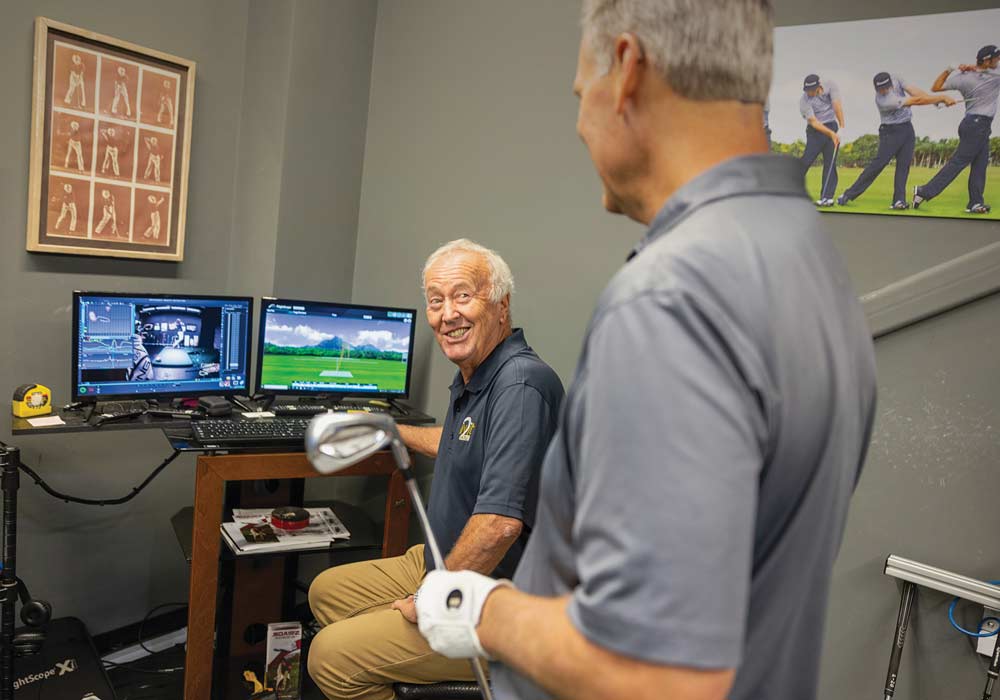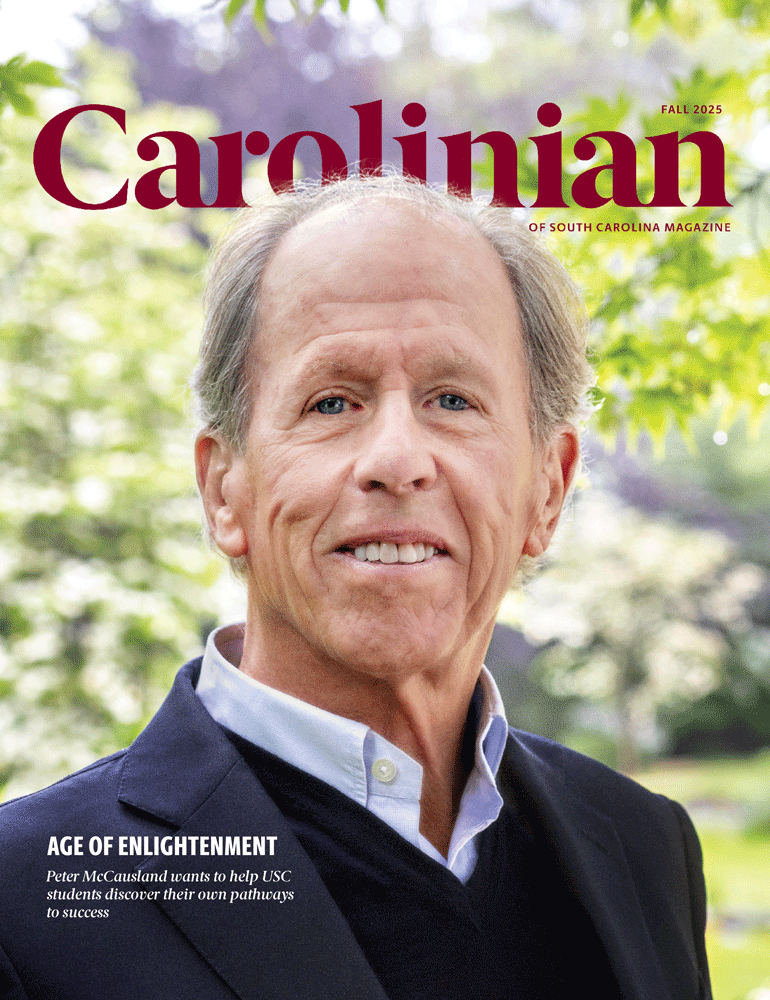
The golfer grabs a 7-iron, steps onto a 36-inch-wide balance plate and positions his feet. To the untrained eye, his swing might look graceful, but something about his mechanics is off. He grimaces as the dimpled sphere shanks to the left. He hits another and another and another with the same flawed results.
Watching the action is Puggy Blackmon, who has been coaching golfers for more than 40 years — half of that time as the men’s and women’s golf coach at USC. He has seen it all and will soon suggest a subtle change to the golfer’s grip. But there’s also a more fundamental problem.
Blackmon stares intently at a computer display connected to the balance plate. The center of pressure is shifting from one foot to the other during each faulty swing. After a short conversation and a crucial tweak to the way the golfer’s right foot contacts the ground, Blackmon has him try again.
And this time ... WHACK! As if by magic, the ball flies straight — and 30 yards further than the previous attempts. “Whoo!” Blackmon shouts. “Whoo!”
It’s all in a day’s work for Blackmon. After retiring from USC four years ago, the former golf coach took on a consulting role at the Motion Analysis and Performance Lab, part of the Prisma Health Apex orthopedic complex near Lexington, S.C. Now, he and his son Tate, a personal fitness and strength trainer, focus exclusively on the golf analysis portion of the MAP Lab.

Blackmon isn’t the only Gamecock offering expert opinions, though. And golfers aren’t the only athletes reaching out.
MAP Lab director Jay Patel, who is also director of sports science for USC’s Athletics Department, and lab assistant Megan Ward, a master’s student in exercise science, have worked with Major League Baseball pitchers, professional men's and women's basketball players, professional ballerinas — even a guy training to make the U.S. Olympic bobsled team.
They regularly see Gamecock student-athletes as well. For example, when former Gamecock baseball pitcher Wesley Sweatt injured his knee as a sophomore, they attached special sensors to his knees, ankles, hips, wrists, elbows and shoulders. Those sensors fed data to special software that created an animated likeness of his body movement for close study.
In addition, 16 high-speed cameras stationed around the lab captured video of Sweatt’s pitching motion from an artificial mound equipped with sensors that measured his foot pressure and balance throughout each throw.
“With this technology, it slows everything down and really gives you a great understanding of how your body is working,” Sweatt says. “They were able to see how I was landing a little off on my knee to favor the weight that I was putting on it, and that affected the way my body rotated. I was able to really make that adjustment the past couple of years and haven’t had problems with my knee since.”
“At the end of the day, there is no one-size-fits-all approach to movement and performance. Whether you’re a 5-year-old with cerebral palsy, or a 50-year-old trying to play golf after knee surgery, or a 25-year-old professional athlete, our mission is to share the utility of analyzing human movement.”
Sweatt , who is now earning a master’s degree in business analytics from the Darla Moore School of Business, hopes to parlay the degree and his athletic experience into a career in sports analytics for a professional team.
Patel can relate — he followed a similar trajectory himself. “Growing up, I played every sport there was,” he says. “My biggest passion was in mixed martial arts. I got banged up over time, which made me want to learn more about how the brain and body work.”
That interest inspired him to earn a master’s in exercise science and a Ph.D. in kinesiology. Combined with his experiences as an athlete and knowledge gained over the years, he now has the perfect credentials to run the MAP Lab. He also regularly teaches a course on the biomechanics of human movement to USC exercise science students.
“We take a multidisciplinary approach in helping people achieve their goals, whether it’s returning from injury or improving their overall performance,” Patel says. “We look at the body as a whole, from biomechanical and physiological perspectives, to search for the source of the issue, not just your back or your elbow that’s hurting right now.”
Increasingly, non-athletes are finding their way to the Lexington County office as well. Once, they were visited by a NASA astronaut requesting expertise on developing a training program to retain strength and muscle mass in the weightlessness of outer space. Special forces military personnel have also jetted in for consultations, keen on maintaining the agility that, in their line of work, can be the difference between life and death.
But really, the diagnostic services can help just about anyone. They see people of all ages and fitness levels who are suffering from joint flexibility and range of motion issues, working toward a more active lifestyle or just wanting to live with less pain.
“Sure, it’s fun to work with professional athletes — I think Jay and Megan would agree — but we just love to see people get better, and we’re seeing that here,” Blackmon says. “That’s what makes it fun.”
There are a handful of labs in South Carolina with similar equipment, but the MAP Lab is the only one of its kind open to the public that doesn’t require a physician’s referral. Anyone can book an appointment for a gait and movement evaluation that includes an array of testing for mobility, strength and flexibility.
“Let’s say a client comes with back pain,” says Ward, who plans to pursue a doctorate in exercise science. “Our focus would be to find the reason for their pain. Is it because of something they did last week, or does it date back to when they sprained an ankle years ago that never healed correctly?
“We’re going to look at your back, but also your hips and your knees and your shoulders because one thing affects the rest. If we can help you stabilize and strengthen other parts of your body, that might help take care of the problem that you’re having.”
That’s welcome news for the professional golfer teeing off at Augusta National or just the average Joe trying to improve their quality of life.
“At the end of the day, there is no one-size-fits-all approach to movement and performance,” says Patel, “Whether you’re a 5-year-old with cerebral palsy, or a 50-year-old trying to play golf after knee surgery, or a 25-year-old professional athlete, our mission is to share the utility of analyzing human movement.”
